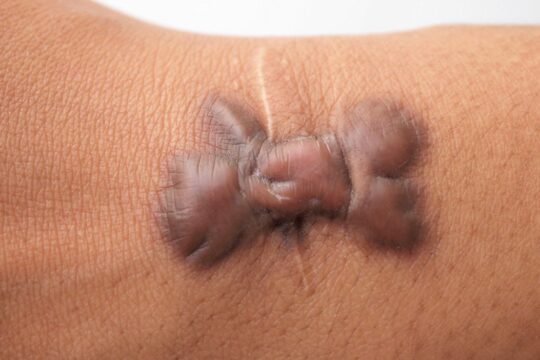Keloid scar treatment: how to manage symptoms
Understanding what a keloid scar is makes it easier to recognise the signs and know when treatment is needed.
Understanding what a keloid scar is makes it easier to recognise the signs and know when treatment is needed.
A keloid scar is an abnormal type of scar that continues to grow even after the wound has healed. Unlike regular scars, it expands beyond the original injury and becomes thick, raised, and often red or darker in colour.
Keloid scars do not fade over time. In fact, they can continue growing for months or even years. This makes them not only a cosmetic concern but also a potential source of discomfort or pain.
Keloid scars typically:
They can occur anywhere on the body but are most common on the chest, shoulders, upper back, and earlobes. People with darker skin tones are more likely to develop keloids.
Keloid scars do not disappear on their own and may worsen over time. Early and consistent treatment can help to:
Hydration plays a key role in caring for keloid scars. ALHYDRAN is a medical after-care cream that supports recovery of vulnerable skin, including keloid and hypertrophic scars. It contains fresh Aloe Vera gel and high-quality oils that:
By improving hydration and protecting the skin barrier, ALHYDRAN helps keep scar tissue flexible and more comfortable in daily life.

If you notice a scar becoming raised, red, or itchy after healing, it’s important to act early. Keloid scars rarely improve without treatment. Consult a medical professional to discuss your options.
For best results, start using a hydrating cream like ALHYDRAN as soon as the wound is completely closed. The earlier you begin scar care, the better the outcome for your skin.
Hydrates, softens and helps prevent scarring
I have used ALHYDRAN cream for a burn on my hand. The burn has healed nicely and is nearly no longer visible.
Recently I had a serious accident, now I have 1st and 2nd degree burns on my chest and stomach. After applying ALHYDRAN I felt a strong relief of the itching, pain and dryness of my bandaged skin. Within a few days my skin became smoother and the scars faded.
ALHYDRAN is a great product. I'm using it after an ugly burn on my hand. The visual result is fantastic! Never thought it would be that good. Thanks.
No. You should not use ALHYDRAN on open wounds, or skin perforated by stitches that has not yet healed. Start using ALHYDRAN immediately after wound closure.
Apply 3 times a day: in the morning, at midday, and in the evening. If your skin is very dry, you can apply more often. A thin layer is sufficient.
Yes. Research shows that ALHYDRAN can be safely combined with pressure garments or silicone sheets. This combination supports skin recovery and helps to reduce scar formation.
We believe it is important that our claims are backed by evidence. The information we share is based on scientific research, clinical studies, and specialist experience worldwide.